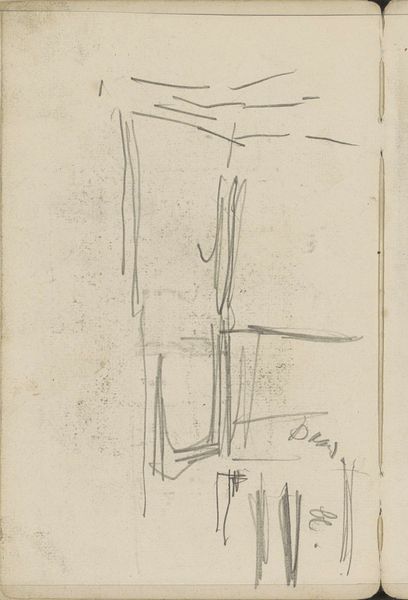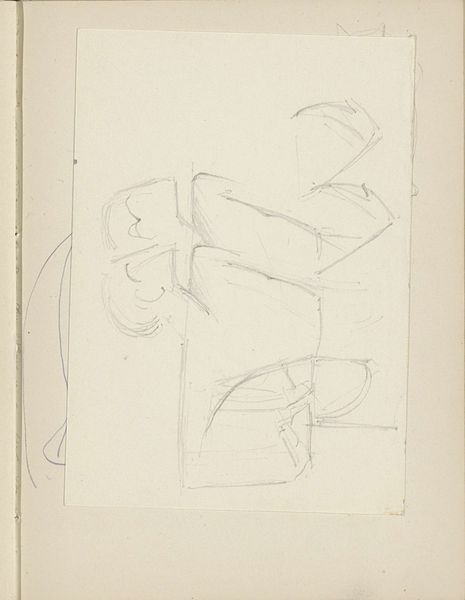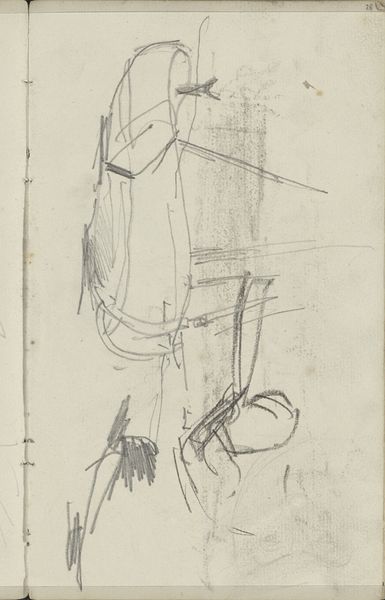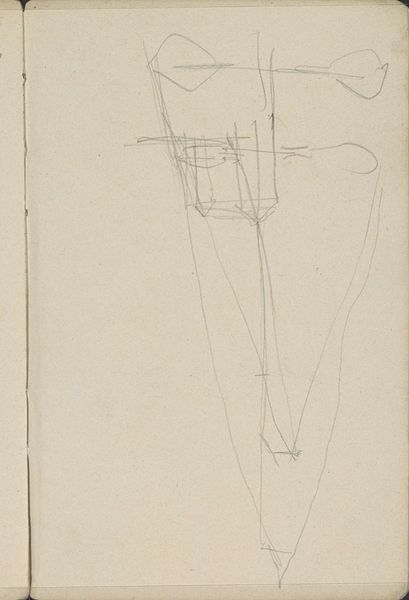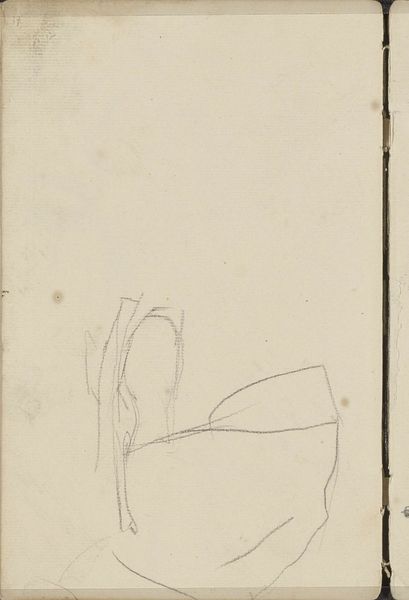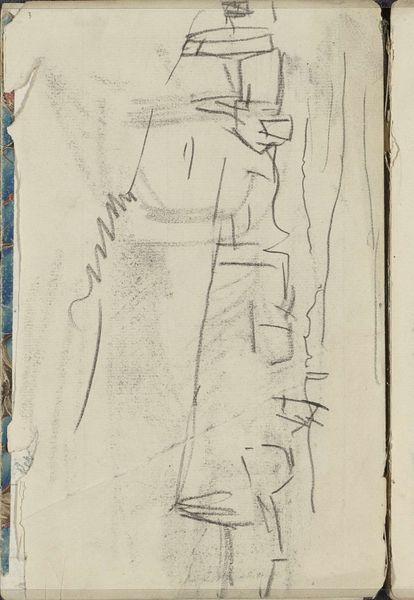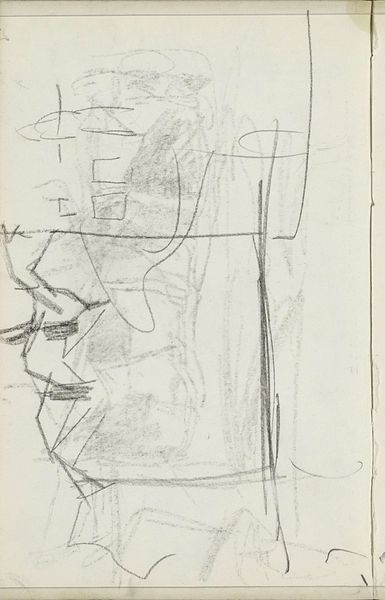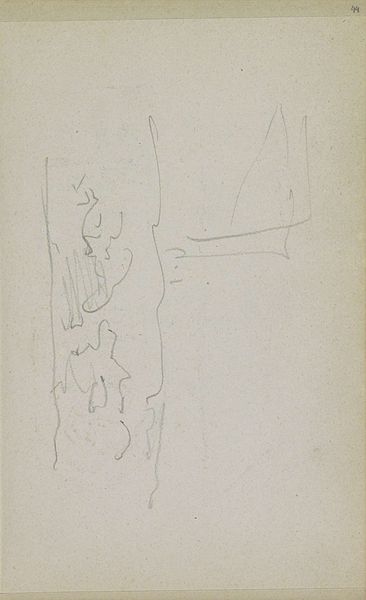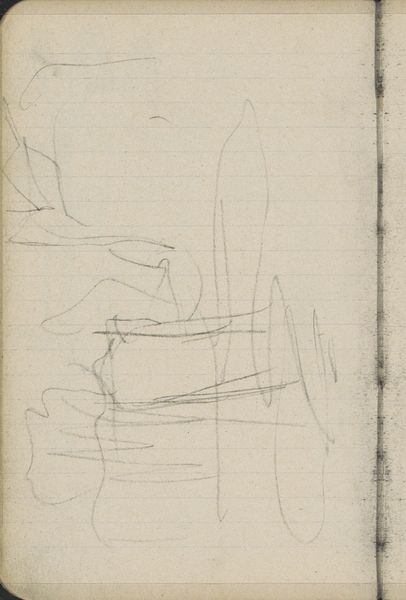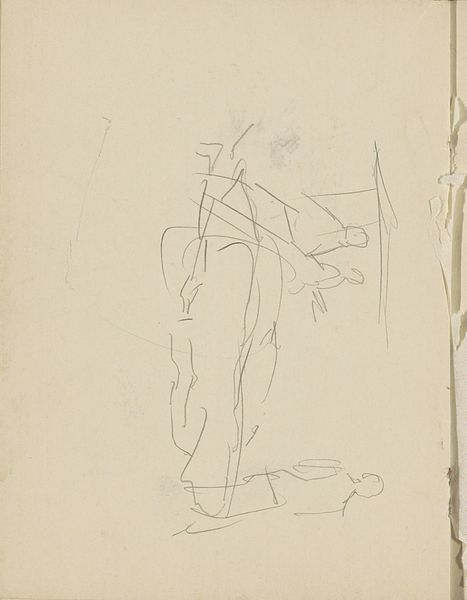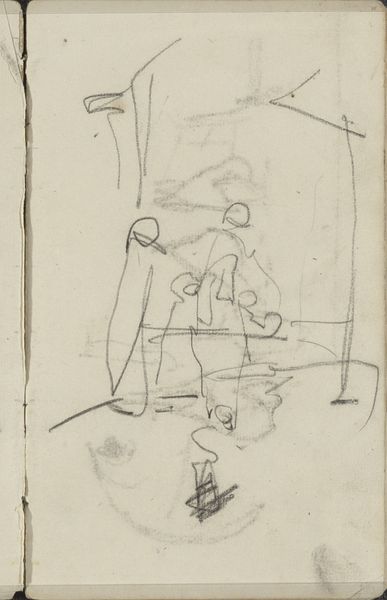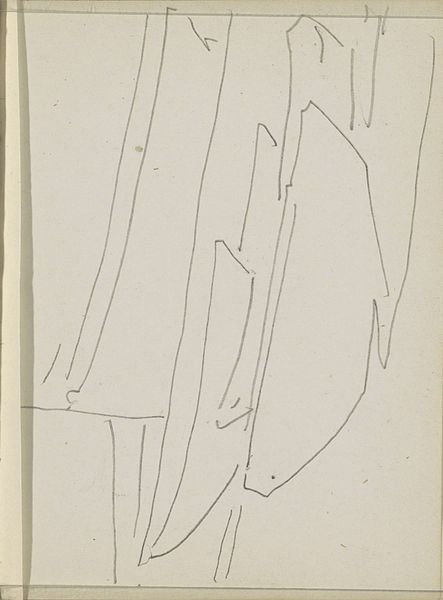
drawing, paper, pencil
#
drawing
#
paper
#
pencil
#
abstraction
#
line
Copyright: Rijks Museum: Open Domain
Editor: This is "Studie" by George Hendrik Breitner, made sometime between 1886 and 1923. It’s a pencil drawing on paper, currently held at the Rijksmuseum. It’s such a simple sketch, almost abstract in a way, just a few lines. What strikes you most about this work? Curator: It's the immediacy and rawness of the materials. The graphite on paper is so direct, a record of the artist's hand and thought process. The thinness of the paper itself also makes one think about the labour of manufacturing this type of paper versus, say, a thicker archival paper. Where did it come from, what wood pulp did it use? The production of the drawing itself can tell us more about class. Does this reading make sense to you? Editor: It does! It's interesting to think about the paper itself as part of the artwork, a material shaped by labour and industry. Curator: Exactly. Breitner’s choice to use these specific materials suggests an interest in portraying the everyday and perhaps, the socio-economic factors influencing it. It rejects traditional, often more lavish materials in favour of a less precious alternative. Think about what that means in the context of art production. Editor: So it’s less about what is depicted and more about how it's made and the context surrounding its making? Curator: Precisely. It invites us to question what we value in art and why. It seems less about creating something 'precious', but more about capturing something fleeting with the everyday resources around. Editor: That's a fascinating way to look at it! It really opens up new avenues for appreciating the drawing. Thanks for that insightful perspective. Curator: It encourages us to reconsider the art object not as an isolated creation, but as a product of material conditions and social relations. I, myself, gained something new through our exchange.
Comments
No comments
Be the first to comment and join the conversation on the ultimate creative platform.
